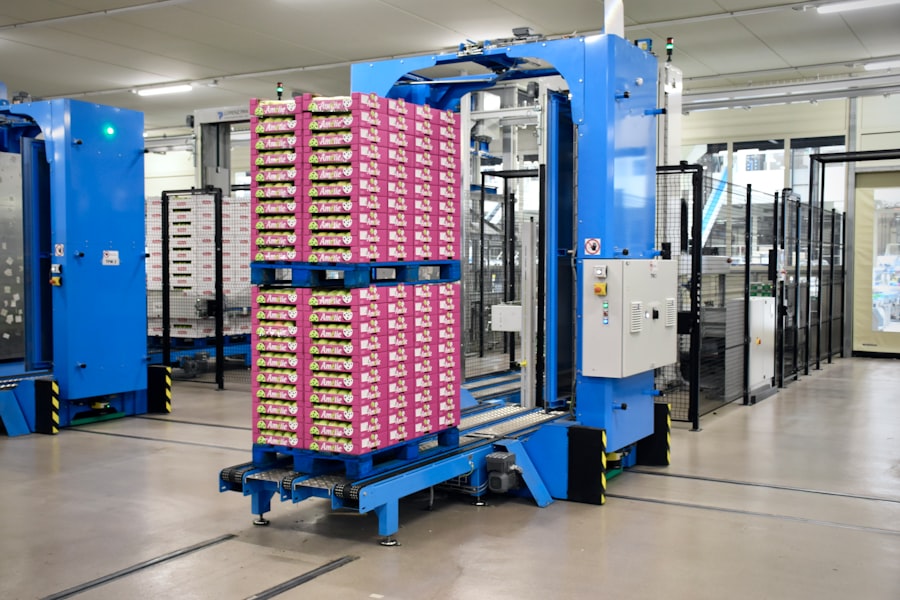Artificial Intelligence (AI) has revolutionized business operations by optimizing workflows and enhancing productivity. AI involves the simulation of human intelligence processes by machines, particularly computer systems. In workflow optimization, AI automates repetitive tasks, analyzes data, and makes decisions, enabling employees to concentrate on more complex and creative aspects of their work.
Organizations leveraging AI can achieve greater efficiency, reduce operational costs, and improve overall performance. AI has the potential to transform various industries, including healthcare, finance, manufacturing, and customer service. AI technologies, such as predictive analytics and natural language processing, are being utilized to streamline workflows and drive business growth.
As organizations embrace digital transformation, AI’s role in workflow optimization becomes increasingly significant. This article will explore the benefits of AI in increasing productivity, the implementation of AI tools for workflow automation, AI’s role in data analysis and decision-making, and its impact on communication and collaboration. Additionally, it will address the challenges of adopting AI for workflow optimization and discuss the future of AI in streamlining workflows to enhance productivity.
Key Takeaways
- AI can streamline workflows by automating repetitive tasks and improving efficiency.
- AI can increase productivity by analyzing data, making decisions, and optimizing processes.
- Implementing AI tools for workflow automation can save time and reduce errors in tasks.
- AI plays a crucial role in data analysis and decision making, leading to better-informed choices.
- AI can streamline communication and collaboration by providing real-time insights and facilitating seamless interactions.
Understanding the Benefits of AI in Increasing Productivity
Enhancing Customer Service
For example, in customer service, AI-powered chatbots can handle routine inquiries, allowing human agents to address more complex customer issues. This not only improves customer satisfaction but also enables employees to work on tasks that require emotional intelligence and empathy.
Data Analysis and Decision-Making
Furthermore, AI can analyze large volumes of data at a speed and scale that is impossible for humans to achieve. This capability enables organizations to make data-driven decisions and identify opportunities for process improvement.
Optimizing Operations
In manufacturing, for instance, AI-powered predictive maintenance can anticipate equipment failures and schedule maintenance proactively, minimizing downtime and optimizing production schedules. By harnessing the power of AI, businesses can enhance operational efficiency and drive continuous improvement across their workflows.
Implementing AI Tools for Workflow Automation
The implementation of AI tools for workflow automation involves integrating AI technologies into existing business processes to streamline operations and improve efficiency. This can be achieved through various means, such as robotic process automation (RPA), machine learning algorithms, and natural language processing (NLP). RPA, for example, can be used to automate repetitive tasks like data entry, form processing, and invoice management.
By deploying RPA bots, organizations can reduce manual errors and free up employees to focus on more strategic tasks. Machine learning algorithms, on the other hand, can be applied to analyze historical data and identify patterns that can optimize workflows. For instance, in supply chain management, machine learning models can forecast demand, optimize inventory levels, and improve logistics planning.
NLP technologies enable machines to understand and interpret human language, which can be leveraged for automating document processing, sentiment analysis, and content categorization. By implementing these AI tools for workflow automation, organizations can achieve greater operational efficiency and agility.
The Role of AI in Data Analysis and Decision Making
AI plays a crucial role in data analysis and decision making by processing large volumes of data and extracting valuable insights that can inform strategic decisions. Through techniques such as machine learning, deep learning, and predictive analytics, AI can uncover patterns and trends within data that may not be apparent to human analysts. This enables organizations to make informed decisions based on data-driven intelligence rather than intuition or guesswork.
In finance, for example, AI-powered algorithms can analyze market trends and trading patterns to make investment decisions with a higher degree of accuracy. Similarly, in healthcare, AI can analyze medical imaging data to assist radiologists in diagnosing diseases at an early stage. By leveraging AI for data analysis and decision making, organizations can gain a competitive edge by identifying opportunities for growth, mitigating risks, and optimizing resource allocation.
AI in Streamlining Communication and Collaboration
AI has the potential to streamline communication and collaboration within organizations by providing intelligent tools that facilitate knowledge sharing and teamwork. For instance, AI-powered virtual assistants can schedule meetings, transcribe conversations, and provide real-time language translation, enabling seamless communication across global teams. Additionally, AI-driven collaboration platforms can analyze user behavior to recommend relevant content, connect employees with subject matter experts, and automate repetitive tasks such as scheduling and file management.
Furthermore, AI technologies like sentiment analysis can be used to gauge employee engagement and satisfaction by analyzing communication patterns within digital channels. This insight can help organizations identify areas for improvement in internal communication and foster a more collaborative work environment. By leveraging AI in communication and collaboration, organizations can break down silos, improve knowledge sharing, and enhance teamwork across departments and geographies.
Overcoming Challenges in Adopting AI for Workflow Optimization

Integration Challenges
One of the key challenges is the integration of AI technologies with existing systems and processes. This requires careful planning and coordination to ensure that AI solutions align with business objectives and are compatible with legacy IT infrastructure.
Ethical Considerations
Another challenge is the ethical use of AI, particularly in decision-making processes that impact individuals or society as a whole. Organizations must ensure that AI algorithms are transparent, fair, and free from bias to avoid unintended consequences or discrimination.
Talent and Data Challenges
Additionally, there is a shortage of skilled professionals with expertise in AI technologies, making it difficult for organizations to build and maintain AI capabilities internally. Furthermore, concerns around data privacy and security pose challenges for organizations looking to leverage AI for workflow optimization. As AI systems rely on vast amounts of data to operate effectively, organizations must prioritize data protection measures to safeguard sensitive information from unauthorized access or misuse.
Overcoming the Challenges
Overcoming these challenges requires a strategic approach that involves collaboration between IT, data science, legal, and business teams to ensure the responsible adoption of AI for workflow optimization.
The Future of AI in Streamlining Workflows for Increased Productivity
The future of AI in streamlining workflows holds great promise for increased productivity and efficiency across industries. As AI technologies continue to advance, we can expect to see more sophisticated applications of AI in workflow optimization. For instance, advancements in natural language processing will enable AI-powered virtual assistants to understand context and intent more accurately, leading to more seamless interactions with users.
Moreover, the integration of AI with Internet of Things (IoT) devices will enable real-time monitoring and control of physical processes, leading to autonomous decision-making in areas such as smart manufacturing and logistics. Additionally, the use of AI for predictive analytics will become more prevalent, allowing organizations to anticipate market trends, customer behavior, and operational risks with greater precision. Furthermore, as AI becomes more democratized through cloud-based platforms and low-code development tools, we can expect to see a wider adoption of AI solutions by small and medium-sized enterprises (SMEs).
This will democratize access to advanced technologies that were previously only available to large enterprises with substantial resources. In conclusion, the role of AI in streamlining workflows for increased productivity is undeniable. By understanding the benefits of AI in increasing productivity, implementing AI tools for workflow automation, leveraging AI for data analysis and decision making, streamlining communication and collaboration with AI technologies, overcoming challenges in adopting AI for workflow optimization, and envisioning the future of AI in streamlining workflows for increased productivity; organizations can harness the power of AI to drive operational excellence and achieve sustainable growth in an increasingly competitive business landscape.
If you’re interested in learning more about AI applications, you should check out this article on AI Applications. It delves into the various ways that artificial intelligence is being used across different industries to improve processes and drive innovation. This article provides valuable insights into the potential of AI to streamline workflows and increase productivity, making it a great complement to the discussion on the role of AI in streamlining workflows.
FAQs
What is AI?
AI, or artificial intelligence, refers to the simulation of human intelligence processes by machines, especially computer systems. These processes include learning, reasoning, and self-correction.
How does AI streamline workflows?
AI streamlines workflows by automating repetitive tasks, analyzing data to provide insights, and making predictions to optimize processes. This can lead to increased efficiency and productivity.
What are the benefits of using AI to streamline workflows?
Some benefits of using AI to streamline workflows include reduced human error, faster task completion, improved decision-making based on data analysis, and the ability to handle large volumes of data efficiently.
What are some examples of AI applications in workflow streamlining?
Examples of AI applications in workflow streamlining include chatbots for customer service, predictive maintenance for equipment, natural language processing for data analysis, and robotic process automation for repetitive tasks.
What are the potential challenges of implementing AI in workflow streamlining?
Challenges of implementing AI in workflow streamlining may include the initial cost of implementation, the need for specialized technical expertise, concerns about data privacy and security, and potential resistance to change from employees.






